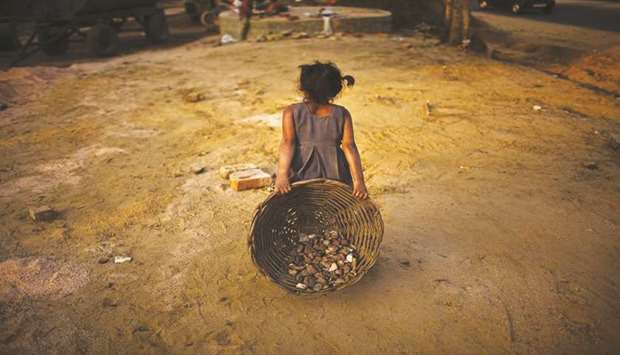Can the world end poverty by 2030, the target set by the United Nations Agenda for Sustainable Development? The UN General Assembly recently reaffirmed this deadline but conceded that meeting it will require “accelerating global actions” to tackle poverty’s causes. As the international community explores new solutions, lessons from the past could be instructive.
Poverty reduction has been central to development policy for decades. During the 15 years of the Millennium Development Goals (MDGs), the predecessor to the Sustainable Development Goals (SDGs), the percentage of people living in poverty – defined as less than $1.90 a day – declined significantly, from nearly 27% in 2000, when the MDGs began, to about 9% in 2017.
At first glance, the rate of poverty reduction in the first few years of the SDGs has also been impressive. Between January 2016 and June 2018, an estimated 83mn people were lifted out of extreme poverty. And yet, to remain on track to meet the 2030 target date, about 120mn people should have escaped poverty during that period. Despite the welcome gains, the pace of progress has been less than satisfactory.
In a recent paper co-authored for the journal World Development, we examined what factors drive successful poverty reduction. Using poverty statistics from developing countries during the MDGs era, we assessed whether countries with higher levels of income poverty – that is, more people living on less money – experienced faster reductions in their poverty rates than economies with lower income-poverty levels. Using limits of $1.25 and $2 per person per day, we found that poverty tended to decrease faster in countries that started out poorer.
But these findings, while positive, tell only part of the story. In many countries, the end of poverty remains a distant goal. For example, at the current pace of poverty reduction, we estimate that Mali, where 86% of the population lived on less than $1.25 a day in 1990, will require another 31 years to eradicate extreme poverty altogether. But even in Ecuador, where only 7% of the population lived on less than $1.25 a day in 1990, eliminating poverty will take at least another decade.
The differing experiences of countries in Africa and Asia illustrate that while adoption of the MDG agenda did accelerate poverty reduction, the degree of progress has varied widely. In the early 1990s, poverty levels in Nigeria, Lesotho, Madagascar, and Zambia were similar to those in China, Vietnam, and Indonesia. But by the time the MDGs ended in 2015, the Asian countries had reduced levels of poverty dramatically; the African countries had not.
This divergence continues. Today, extreme poverty is mostly contained to Africa; according to the World Bank’s 2018 Poverty and Shared Prosperity report, 27 of the world’s 28 poorest countries are on the continent, and each has a poverty rate above 30%. In fact, at current rates of poverty reduction, more than 300mn people in Sub-Saharan Africa will still be poor in 2030.
Many factors have contributed to the shifting geography of poverty. In Africa, weak economic performance – fuelled by conflict, ineffective policies, ethnic fragmentation, and external shocks – has made it more difficult for countries to fund poverty-alleviation programmes. But the most important factor may be state capacity. After all, weak state institutions cannot effectively deliver public goods and services.
Of course, this leads to another question: what factors determine a state’s capacity? In general, states work better when ruling elites are bound by limits on their power. But administrative experience also plays a role. China, with a slightly longer period of modern statehood than most of its younger African counterparts, may simply have developed a greater ability to administer its territory.
And yet, whatever the reason for the variation, there is no doubt that state capacity is one of the key ingredients for successful poverty reduction. We found that during the MDGs, high-poverty countries with strong state institutions were able to reduce poverty twice as fast as countries with feeble capacity, and were more likely to achieve the MDGs’ target of halving poverty by 2015.
Poverty eradication remains a top priority for the 193 governments that have adopted the SDGs. But as the international community learned from the MDGs, goals do not guarantee progress. To ensure that the 725mn people who remained in poverty at the end of MDGs period can escape requires investing in programs that aim at building effective states. Otherwise, an end date for poverty will remain elusive. – Project Syndicate
l M Niaz Asadullah is Professor of Development Economics at the University of Malaya in Kuala Lumpur, and Head of the Southeast Asia cluster of the Global Labor Organisation. Antonio Savoia is Senior Lecturer in Development Economics at the University of Manchester.

Poverty eradication remains a top priority for the 193 governments that have adopted the SDGs.
